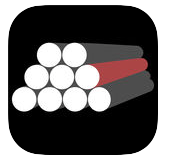Nach dem erfolgreichen Launch der Fleet App folgt nun die Anbindung an die Fleety Cloud:
Es handelt sich dabei zu einem um die Online Variante der Fleety App. Es ist möglich über den Webbrowser neue Protokolle zur Fahrzeugübergabe zu erstellen oder alte Übergabeprotokolle aufzufinden und zu bearbeiten. Die Dateneingabe sieht genau so aus wie in der Fleety App.
Auf der anderen Seite kann Fleety Cloud die in der Fleety app erfassten Übergabeprotokolle direkt annehmen. Es wird dabei getrackt welcher User das Fahrzeug Übergabeprotokoll hochgeladen hat. Die User kann man wiederum in die Gruppen aufteilen, so dass z.B. Nutzer eines Firmenstandortes den Zugriff nur auf ihre Übergabeprotokolle haben.
Wie auch bei den anderen Systemen der formapps Familie, ist es auch bei Fleety möglich pro Nutzergruppe eigene Eingabeanpassungen oder Druckanpassungen vorzunehmen. Die Anbindung neuer/anderer Erfassungsformulare ist ebenso kein Problem.
Nimmt gerne Kontakt mit uns auf, wenn ihr euch am Thema Digitalisierung grundsätzlich interessiert seid. Fleety ist extrem flexibel, anpassbar und ermöglich einen blitzschnellen Einstieg.


 Was eine App ist, weiß mittlerweile jeder. Doch wie entstehen Apps? Kann wirklich jeder Apps bauen? Lasst uns einen Blick hinter die Kulisse werfen.
Was eine App ist, weiß mittlerweile jeder. Doch wie entstehen Apps? Kann wirklich jeder Apps bauen? Lasst uns einen Blick hinter die Kulisse werfen. Last week I had a pleasant acquaintance with Adam Giemza, head of solution architecture and security at DB Schenker AG. He asked me about Progressive web and my opinion to it. Frankly speaking, I had no opinion at all, because I’m specialized more on native apps for iOS and Android. Of course, hybrid apps, mobile first approach, responsive design are the things I heard of and had even a bit experience with them. But what are Progressive web apps? I began to read about it.
Last week I had a pleasant acquaintance with Adam Giemza, head of solution architecture and security at DB Schenker AG. He asked me about Progressive web and my opinion to it. Frankly speaking, I had no opinion at all, because I’m specialized more on native apps for iOS and Android. Of course, hybrid apps, mobile first approach, responsive design are the things I heard of and had even a bit experience with them. But what are Progressive web apps? I began to read about it. Auf Ebay Kleinanzeigen wird man fündig. Gebrauchte Lampen, Fernseher, Spielzeuge, Gartenmöbel und auch “App Programmierer”. Die letzteren werden zwar selten angeboten, dafür aber gerne gesucht.
Auf Ebay Kleinanzeigen wird man fündig. Gebrauchte Lampen, Fernseher, Spielzeuge, Gartenmöbel und auch “App Programmierer”. Die letzteren werden zwar selten angeboten, dafür aber gerne gesucht. Every year various programming communities try to create and to analyze the rating of existing programming languages. Just to mention few of them:
Every year various programming communities try to create and to analyze the rating of existing programming languages. Just to mention few of them:  It’s the time of candles, cakes, songs, presents and laughter. Before we all dive into the joy of Christmas holidays, I want to say “thank you” to all those who actively supported me this yeah by development of the PolterApp. We worked together and we reached more than expected. What we made so far is a good base for further development and another victories.
It’s the time of candles, cakes, songs, presents and laughter. Before we all dive into the joy of Christmas holidays, I want to say “thank you” to all those who actively supported me this yeah by development of the PolterApp. We worked together and we reached more than expected. What we made so far is a good base for further development and another victories. I gave up my private web site i-gorod.org and now moved my internet presence to a new domain. It is not only the domain name that was changed, but also the concept. i-gorod was once a chat for the friends of mine. Afterwards I made it to a developer blog and never found time to full it with content.
I gave up my private web site i-gorod.org and now moved my internet presence to a new domain. It is not only the domain name that was changed, but also the concept. i-gorod was once a chat for the friends of mine. Afterwards I made it to a developer blog and never found time to full it with content.